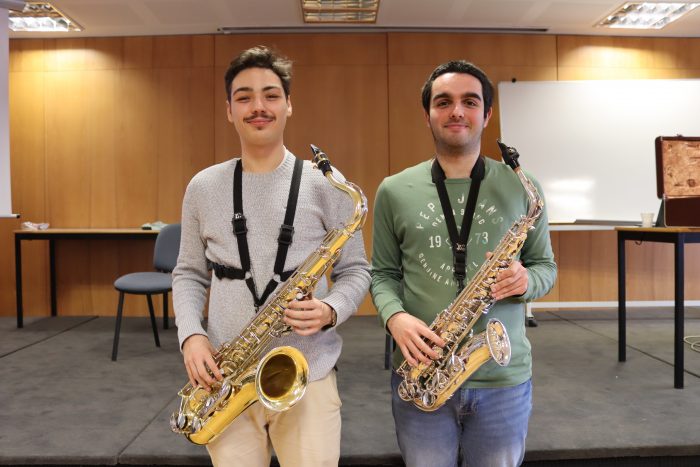Students showcase saxophones at Viver a Cultura @ Técnico Taguspark

On the 9th of January, Técnico students, who are also members of the Tuna Mista, teached some characteristics of the saxophone, in the seventh edition of Viver a Cultura @ Técnico Taguspark.
The session consisted of a conversation interspersed with musical interpretations by students Gonçalo Jesus and Vasco Vaz. Those present were exposed to some techniques for using a saxophone. From how to hold the instrument, through demonstrations of how it should be tuned, specific techniques on how to play the same note, to cleaning methods. The two students performed individually, presenting musical interpretations of titles such as “Take Five” and “Take me to church” and also performed in a duet, the songs “He’s a Pirate” and “Guilty of being innocent”. The session ended with a classic “Pequena Czarda” played by Gonçalo Jesus, which was answered with a strong applause.
Those present also got to know the history of the saxophone, how it was created in 1851 and how it came from the clarinet, in addition to how it works. In order to show how complex it is to play this instrument, the students asked volunteers to blow into the mouthpiece (initial part of the instrument). The spectators, in turn, realized the difficulty of the volunteers in doing as requested and understood that it is not just the passage of air that creates the sound, but the vibration of a piece of wood that is in the mouthpiece, called the reed, and that, for it to vibrate, it is necessary to train a lot.
The students also showed the audience several examples of saxophones with different sizes and sounds, as well as photographs of record-breaking saxophones, such as the highest-pitched saxophone, called the soprano saxophone. In addition, it was also explained to the public that the sound produced varies according to the distance traveled by the air inside the instrument, generating higher and lower notes and that is why larger saxophones produce lower sounds and vice versa.
